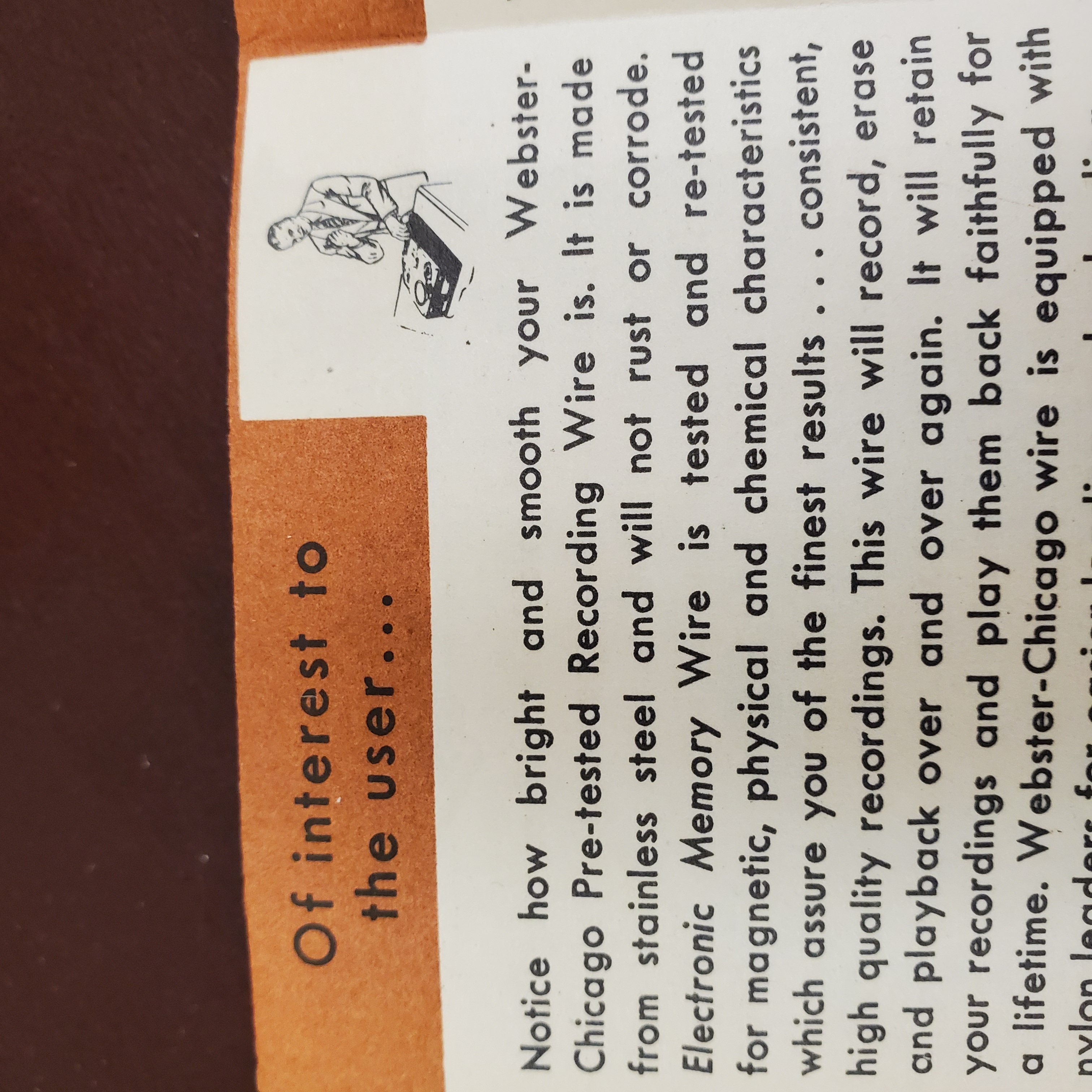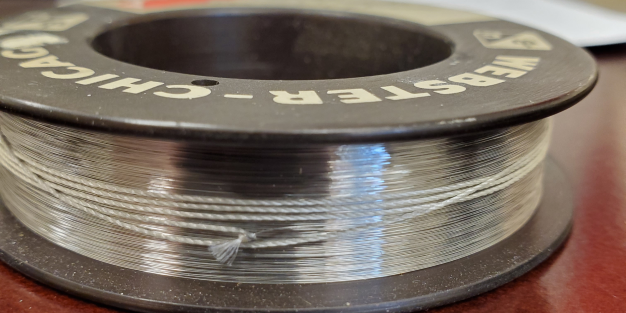Rehousing Wire Recordings
Most of the wire recordings held at the American Philosophical Society today are in the Floyd Lounsbury Papers—there are 56 in all. These were popular for about a decade starting in the mid-1940s. Part of their appeal was their compact size—the wire is about the width of a hair, so you could record for an hour onto a 3-inch diameter spool. Being the first magnetic medium, transferring the sound didn't involve cutting into them, making them possible to use while moving. Their audio quality was also quite impressive. Floyd Lounsbury, a linguist, therefore likely enjoyed their utility for field recordings, and they also got some use for dubbing from earlier phonograph recordings.
The downside of being recorded onto a very thin strand of wire is that it's incredibly easy for these to break, tangle, and devolve into a bird's nest. If they break, they can be spliced back together using a very tiny knot. Berlin-based ambient musician Hainbach has an excellent video here demonstrating novel use of a wire with its recorder, as well as, at 6:39, how easy the wire is to break.
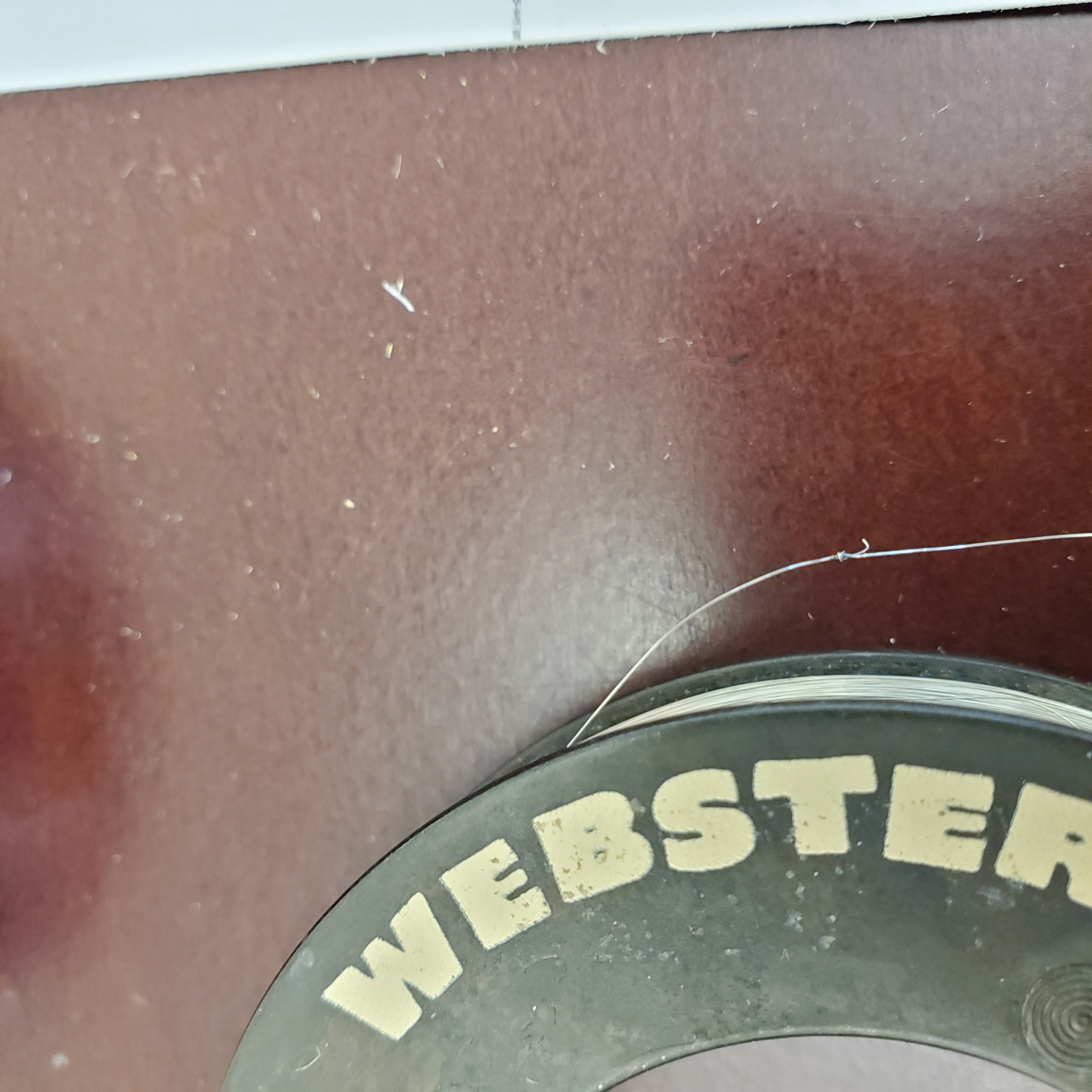
These wire recordings include various Brazilian languages (Paresi, Umótina, Bakairi, and more), Quechua, North American languages (Oneida, Mohawk, Cherokee, Cayuga, and more), some possibly instructional Sanskrit and Vietnamese, and six of Shanghainese, likely documenting work done with his wife, fellow Yale linguist Masako Yokoyama Lounsbury. A few are recordings of classical music and one of some "nonsense" at a party hosted by anthropologist Richard Shaedel.
While the recordings had been previously moved to archival boxes, they did not have individual cataloging written on them, or individual housing. The APS digitized many of them during our 2008-2014 Mellon Foundation-funded audio project, but the scope of the project was limited to Indigenous languages of the Americas, meaning not all wire recordings and other media in the collection were cataloged at the time.
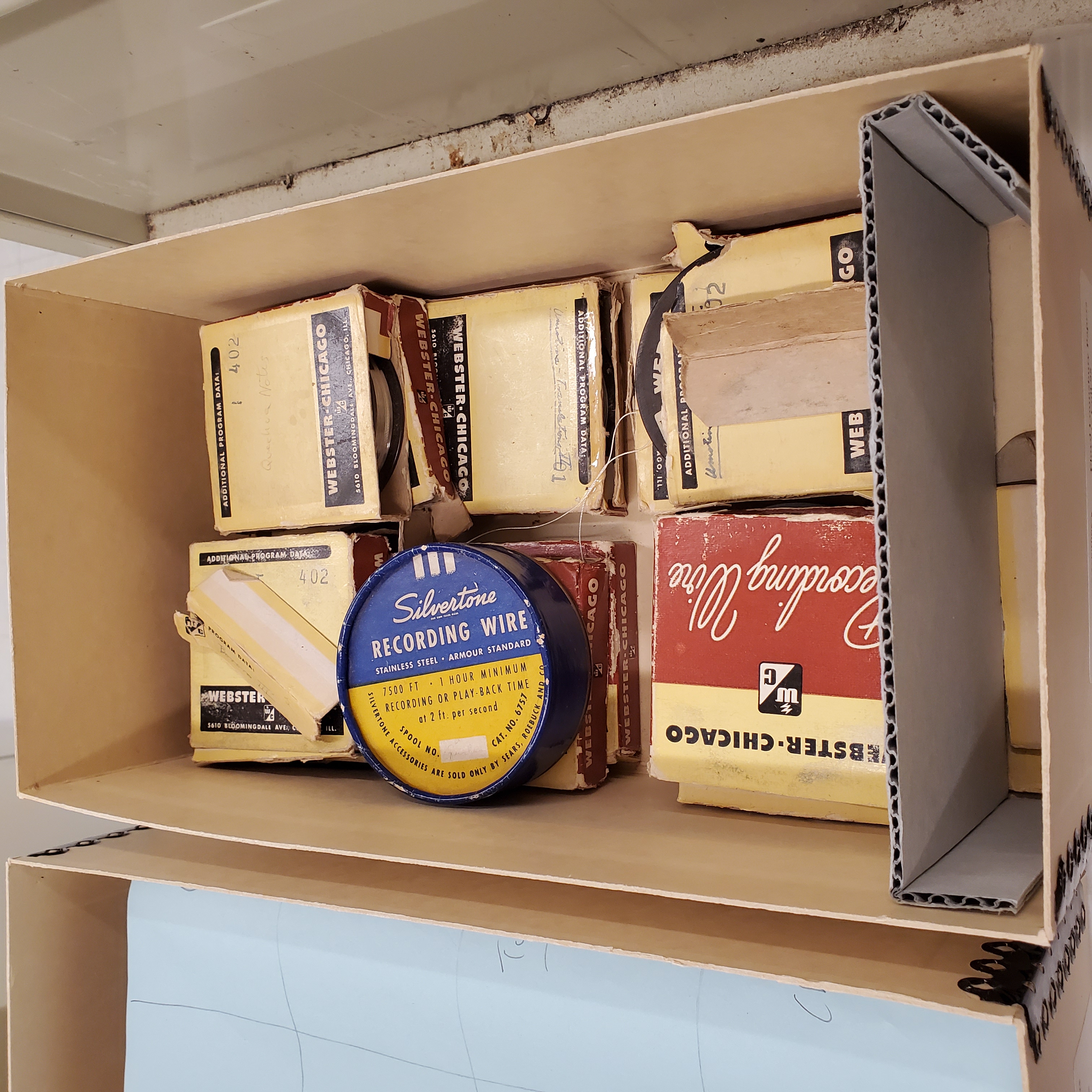
Improving their housing and individually cataloging the remaining 200 or so carriers (reel-to-reels, cassettes, and discs) in this collection is part of a broader effort to understand the full extent of the analog and digital media at the APS, so we can transfer them onto more reliable and usable storage. This meant first creating an inventory of them in-situ as a large spreadsheet. This is a good general approach if you ever have some overwhelming set of documents, recordings, and so on: give each box that currently exists a number, list everything in each box, and eventually patterns will emerge that will allow you to understand and organize them.
The next task was to research how to rehouse them. Existing manuals came up short on detail, usually subsuming them under general advice on magnetic recordings. I reached out for help on the Association for Recorded Sound Collections’ listserv, and my colleague Susie Anderson put me in touch with conservator Dyani Feige. Thank you all for your advice. I had to adapt to some local constraints but was mostly able to implement it as suggested.
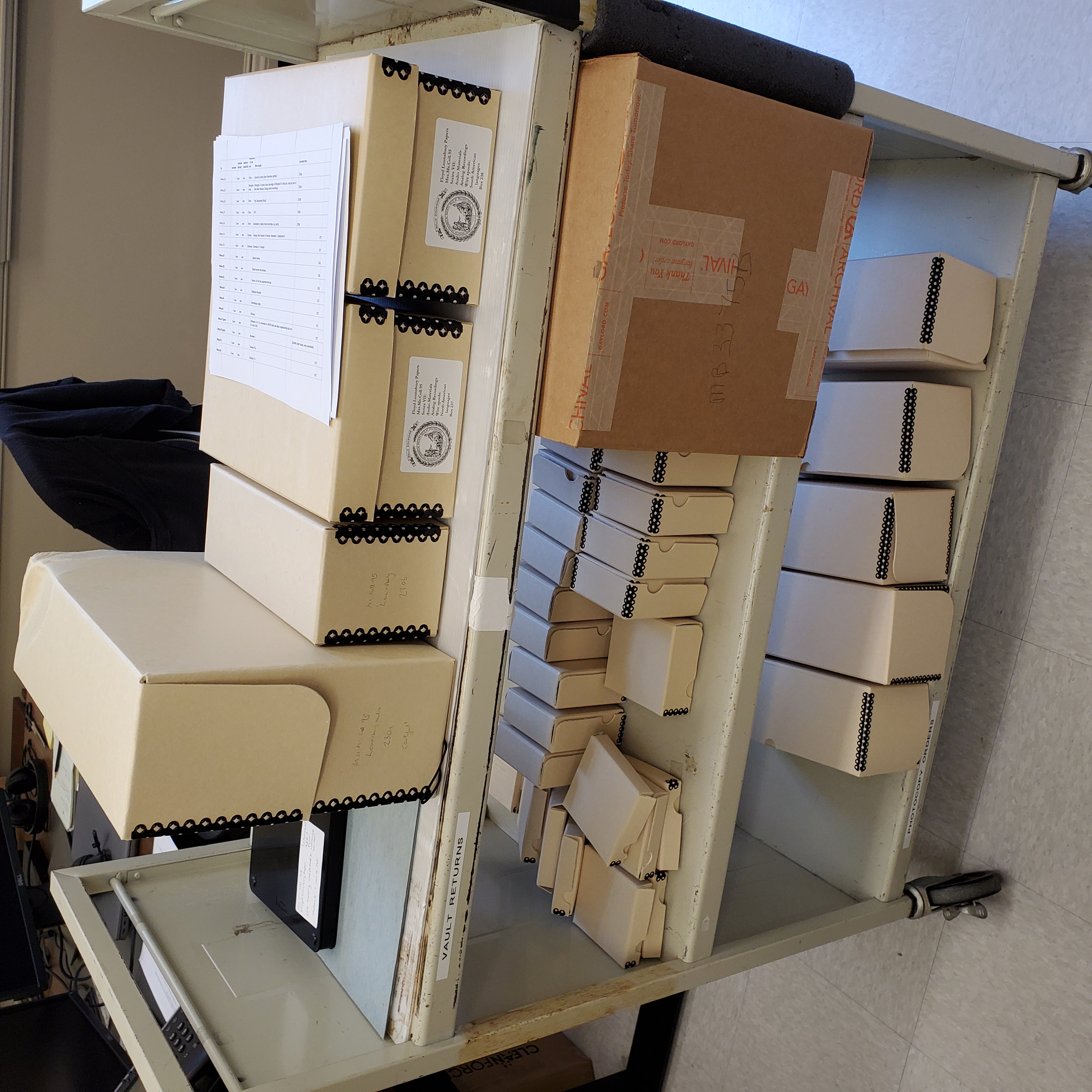
A big surprise is that no boxes appear to exist on the market specifically for archival housing of wire recordings. I went looking on major archival supplies vendors' sites, finding plenty for most other audio analog media, but nothing for wire recordings. Other archivists reported success using 16mm microfilm boxes, so I ordered a bunch of those and a few 35mm for the Silvertone containers that do not fit in these. The general advice is to discard the containers in case of mold or rusting, but I saw no sign of these after 70+ years, and the containers had some useful metadata, so I elected to keep them.
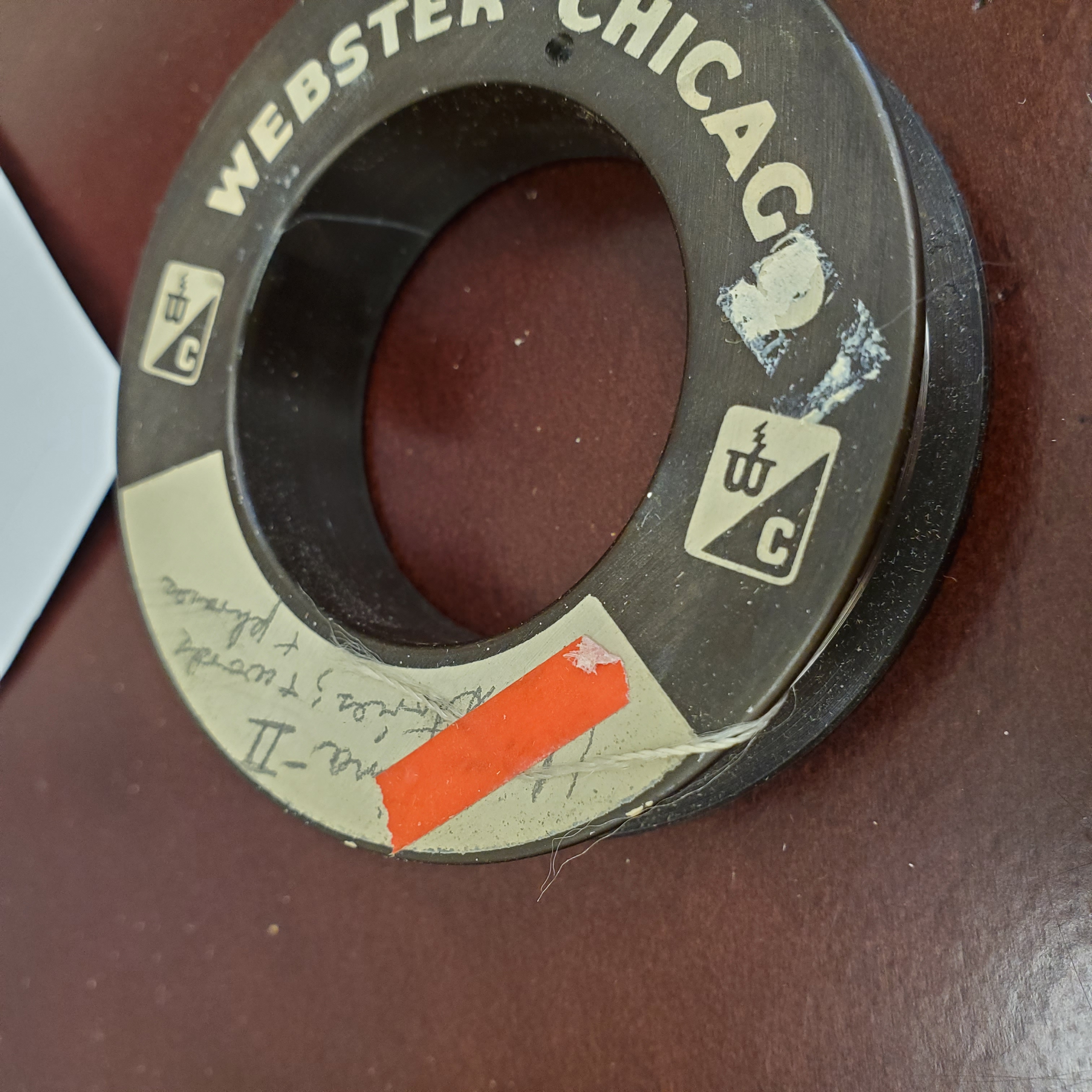
The wire recordings can be stored vertically, so I also ordered some boxes designed specifically to house the microfilm boxes vertically. I was concerned this might allow them to roll, but as long as the wire is securely taped at the end, they should be stable, and the weight on them prevents them from fully unraveling if they do begin to unravel. Most were indeed securely taped already, usually (as the original advice manuals in a few of the boxes suggested) with string tied as leader to the wire. There were a few that had unraveled and had loose wire outside the edge of the spool. Concerned that the spool’s weight on the thin individual wires might cause them to break when shifting, I chose to lay these few flat, with some light paper encasing them to prevent movement. Fortunately all three that were partially unraveled have already been digitized.
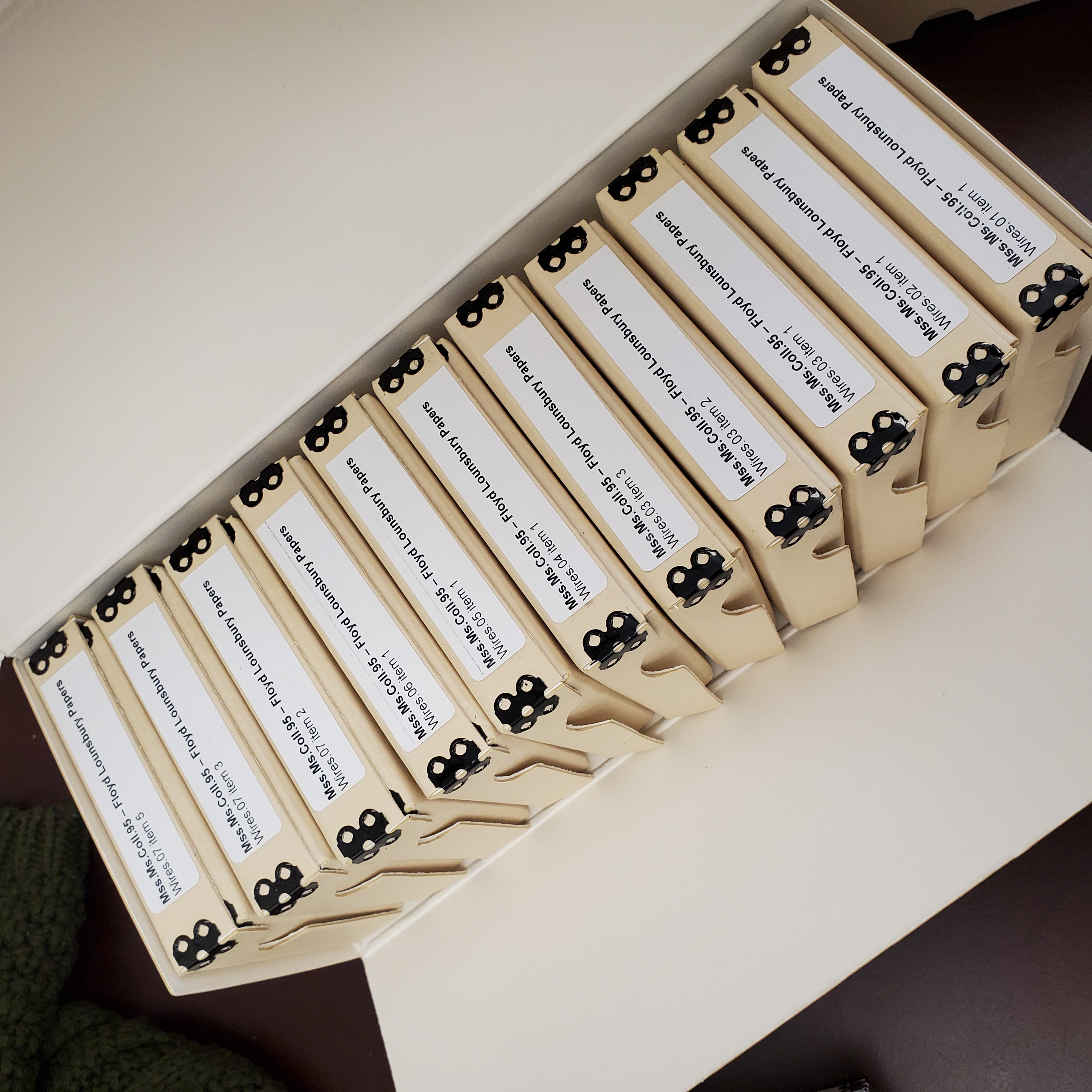
A small booklet inside boasts that the wire "will retain your recordings and play them back faithfully for a lifetime." I believe the 73 years since most of these were recorded counts as that lifetime, so I hope they were speaking figuratively.
